Florida is a beautiful place to live, but guests and residents, especially those in southern parts of the state, know that some of the local wildlife isn’t to be trifled with. Florida’s forests and swamps are home to 44 species of snakes, including 6 venomous species. That may not sound like much, but some of them are numerous and easily confused with non-venomous snakes. It’s important to be able to identify and avoid some of these dangerous reptiles if you plan on exploring the wooded and marshy areas of Florida, because some of their bites pack enough of a punch to kill.
Please note that many of these snakes can be easily confused for non-venomous species, but you should not attempt to approach them in order to identify them because you run the risk of discovering they are venomous the hard way! Do not approach any snake unless you are absolutely positive you know what species it is, and even then, be sure to exercise caution.
Eastern Diamondback Rattlesnake
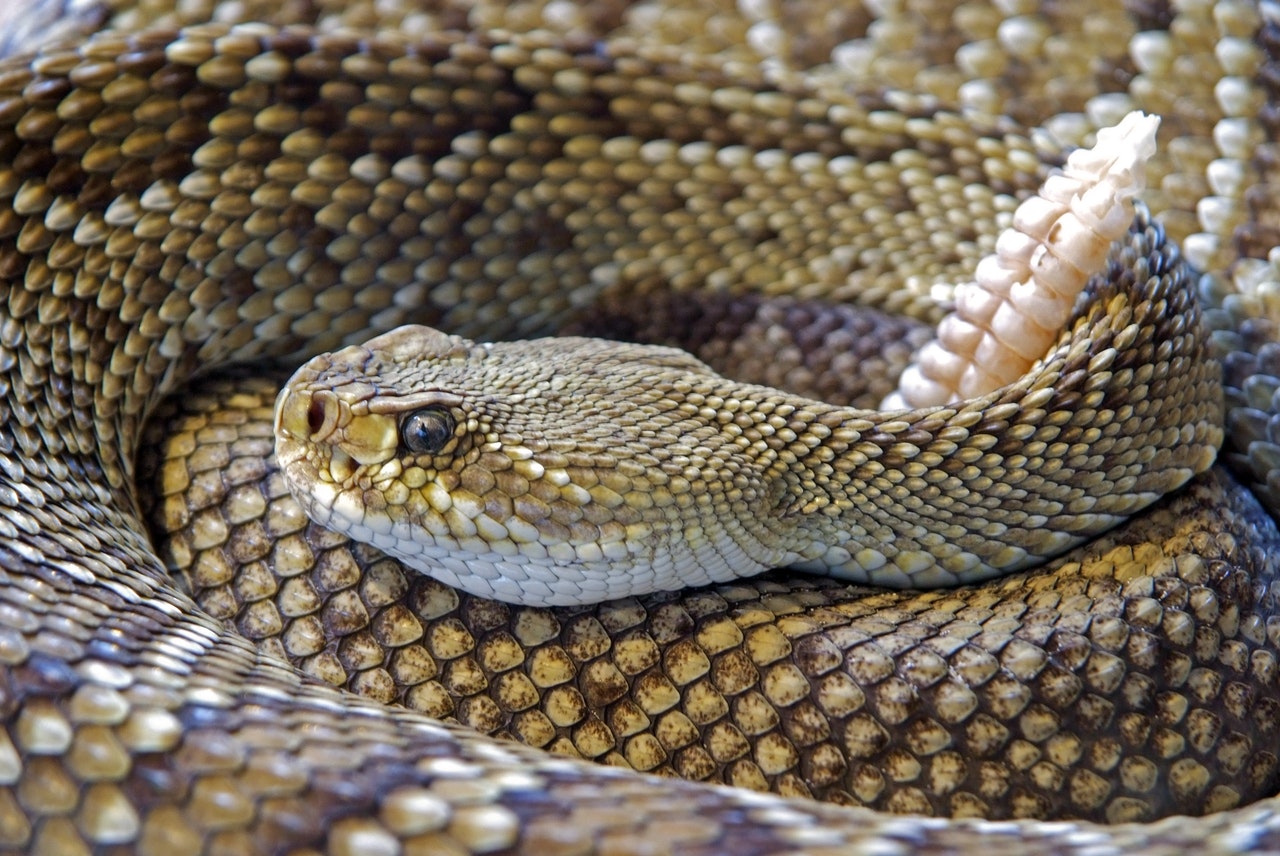
(image source: https://www.pexels.com/photo/nature-animal-reptile-snake-36714/)
Not only are these the most venomous snakes in Florida, they are known as being the most dangerous venomous snakes in North America. TThey can swim and can be found on Florida’s barrier islands. Be careful when walking in wooded areas or pine savannas, as they prefer to hunt and hide using forage and leaves as camouflage.
They are not aggressive and prefer to flee from encounters with humans, but will puff themselves up to make themselves larger and eventually rattle their tails to scare off potential threats. If attacked or threatened, they may bite with fangs proportionally longer than any other rattlesnake species. Their bites have been described as severely painful and can potentially kill humans within 6-48 hours. If bitten, seek medical attention immediately.
As their name suggests, they are easily identifiable by their brown, yellow, or tan scales with black, brown, and cream colored diamonds down their back. They have large, broad heads and thermal pits between their eyes and nostrils. Diamondbacks are large, heavy snakes that are usually 3 to 6 feet long, but they can grow up to 8 feet long.
Water Moccasin/Cottonmouth
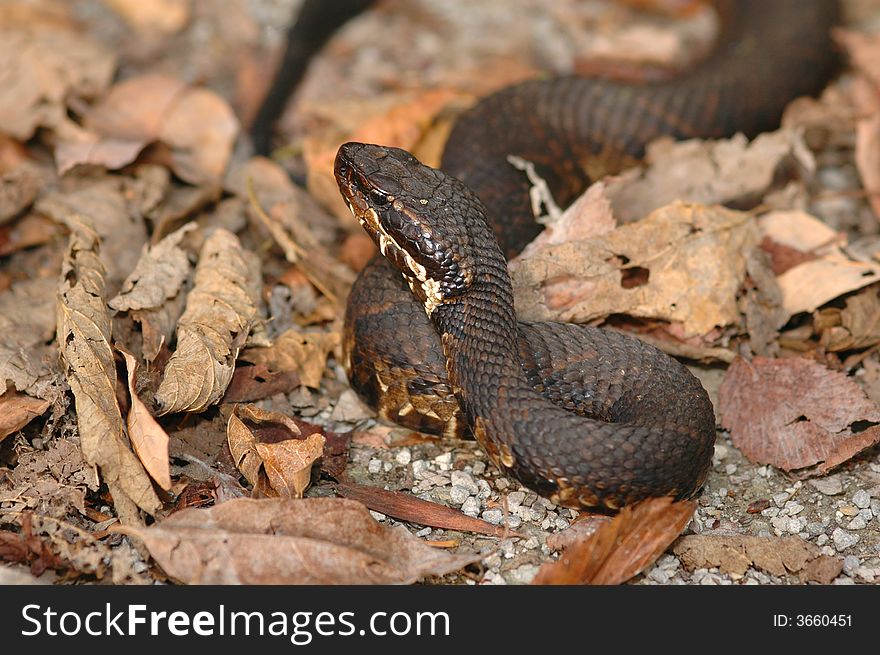
(img source: https://www.stockfreeimages.com/3660451/Cottonmouth.html)
These pit vipers are most commonly found throughout Florida in wet areas like swamps, marshes, and lakes, but can wander away from water if they want. They are the only known species of semi-aquatic vipers in the world and are very capable swimmers.
Though they are not aggressive, they have been known to bite when threatened, and most bites occur due to people disturbing their nests or accidentally stepping on them. Their venom can be extremely dangerous to people and pets and bite victims should seek immediate emergency medical treatment as soon as possible.
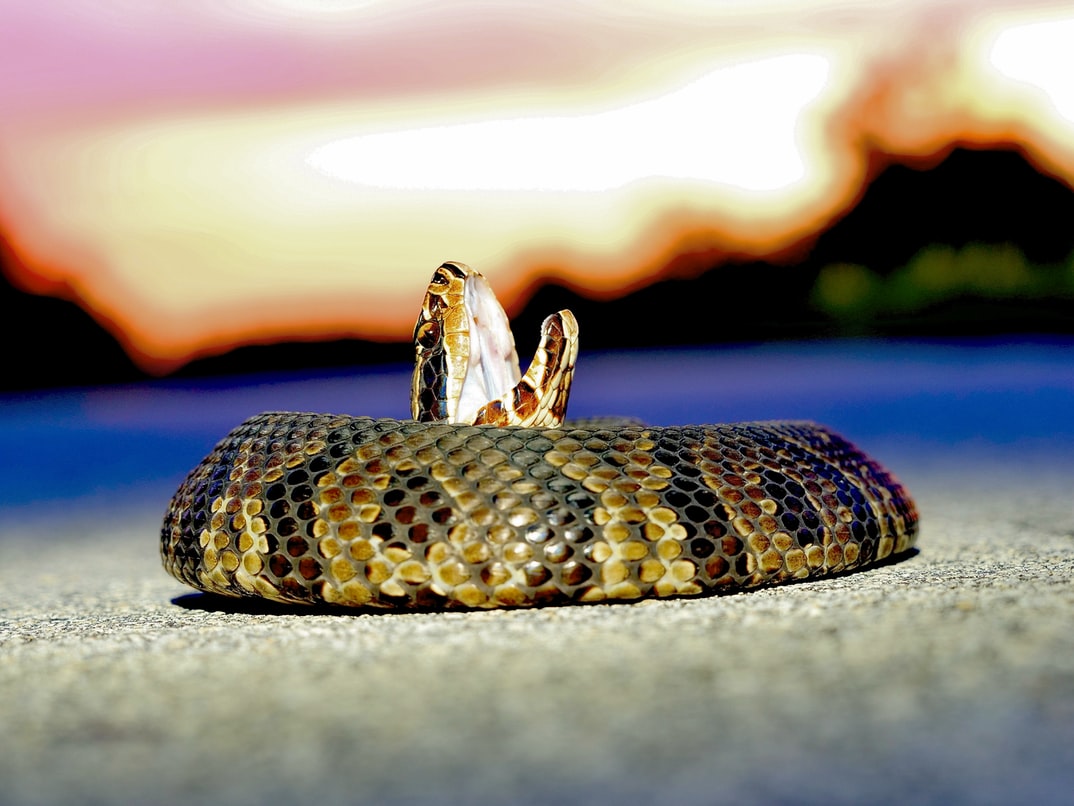
(image source: https://unsplash.com/photos/OSZKrGYDhv0)
Juveniles are brown or tan with reddish crossbands and have bright yellow tail tips. Their patterns fade and darken as they age, usually becoming uniformly dark or leaving only a hint of the original pattern. They usually grow from 30-48 inches in length and have thick, heavy bodies. It can be easy to confuse cottonmouths with nonvenomous water snakes. They can be distinguished by the cottonmouth’s facial pits, vertical pupils, and brow ridges.
Eastern Coral Snake
 (img source: https://free-images.com/display/coral_snake_npsphoto.html)
(img source: https://free-images.com/display/coral_snake_npsphoto.html)
These highly venomous snakes can be found in all parts of Florida. Though they have extremely potent venom, they rarely bite humans and prefer to avoid encounters. In Florida, they prefer sandhills and dry areas that have bushes but not extremely heavy vegetation.
Most of their time is spent hiding underground, and they are known to be fairly shy around humans, so bites are rare. Even if they are threatened enough to bite, they are less likely to envenomate their bites compared to other species. However, antivenin for coral snake bites isn’t widely produced, so extreme caution is recommended around them nonetheless. As long as people watch where they step and are mindful of their surroundings, they are fairly simple to avoid.
Coral snakes are well known for their part in the saying, “Red next to yellow kills a fellow. Red next to black is a friend to Jack,” use to differentiate their red-white-yellow stripe pattern from the nonvenomous king snakes. They are medium sized, slender snakes, usually growing from 31-48 inches in length.
Timber Rattlesnake
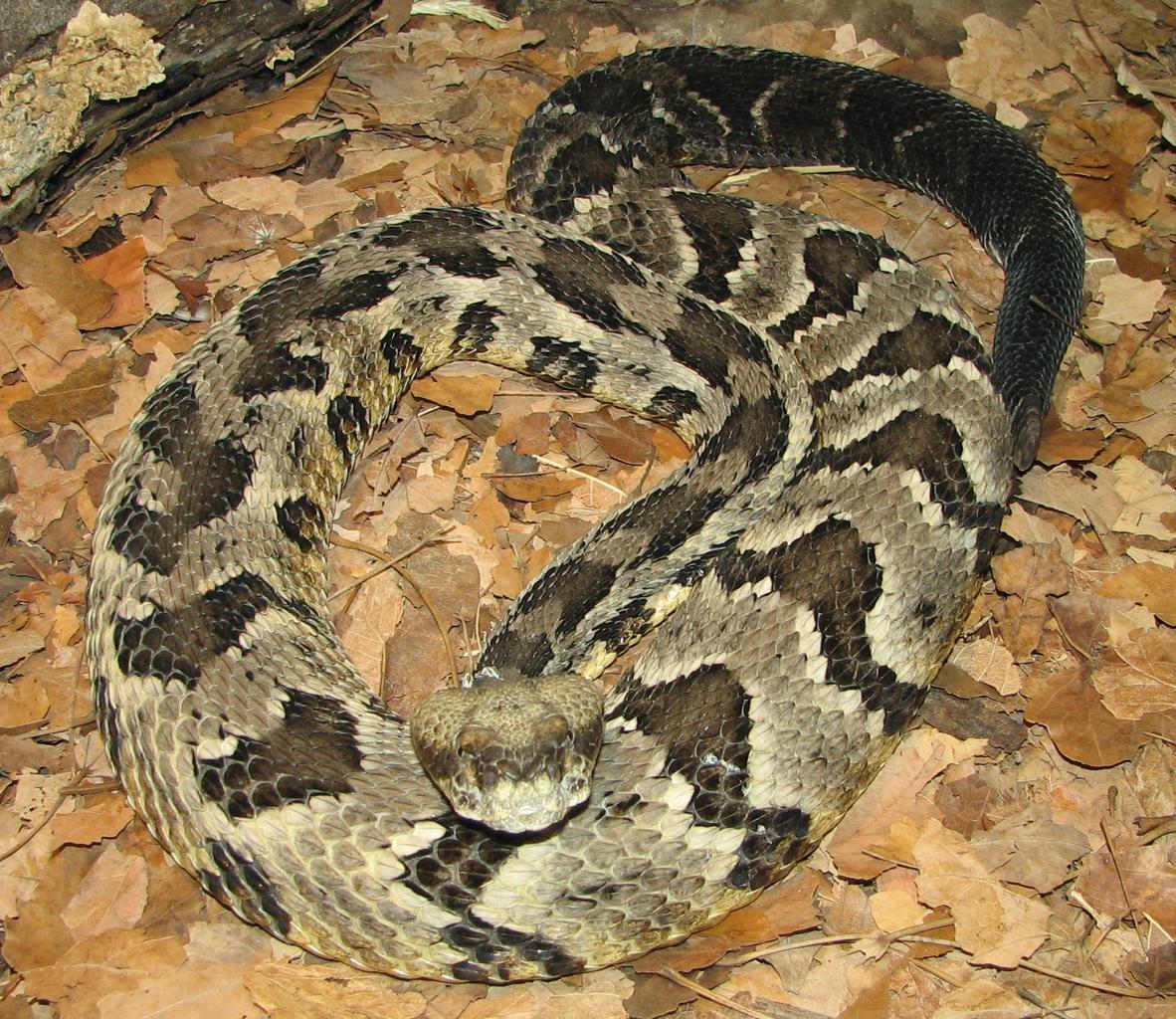
(img source: https://free-images.com/display/timber_rattlesnake_image_004.html )
Timber Rattlesnakes are somewhat large, widespread species found from forested areas to rocky bluffs. They are the 3rd largest venomous snake species in the U.S. and can potentially be very dangerous. They are mostly found in rural, wooded areas and are much more common in the upper southern states, but can be found in some parts of North Florida.
Despite their high venom yield, large size, and long fangs making them potentially extremely dangerous, deaths from timber rattlesnake bites are rare. They are mild-mannered, hibernate for very long periods of time, and will usually attempt to scare off potential threats before they feel the need to strike.
Timber Rattlesnakes are usually yellowish or grayish brown with dark brown or black crossbands. Many have a rust-colored stripe down their backs. Sometimes, individuals with melanism are very dark and almost solid black. They are usually from 39 to 45 inches in length.
Southern Copperhead
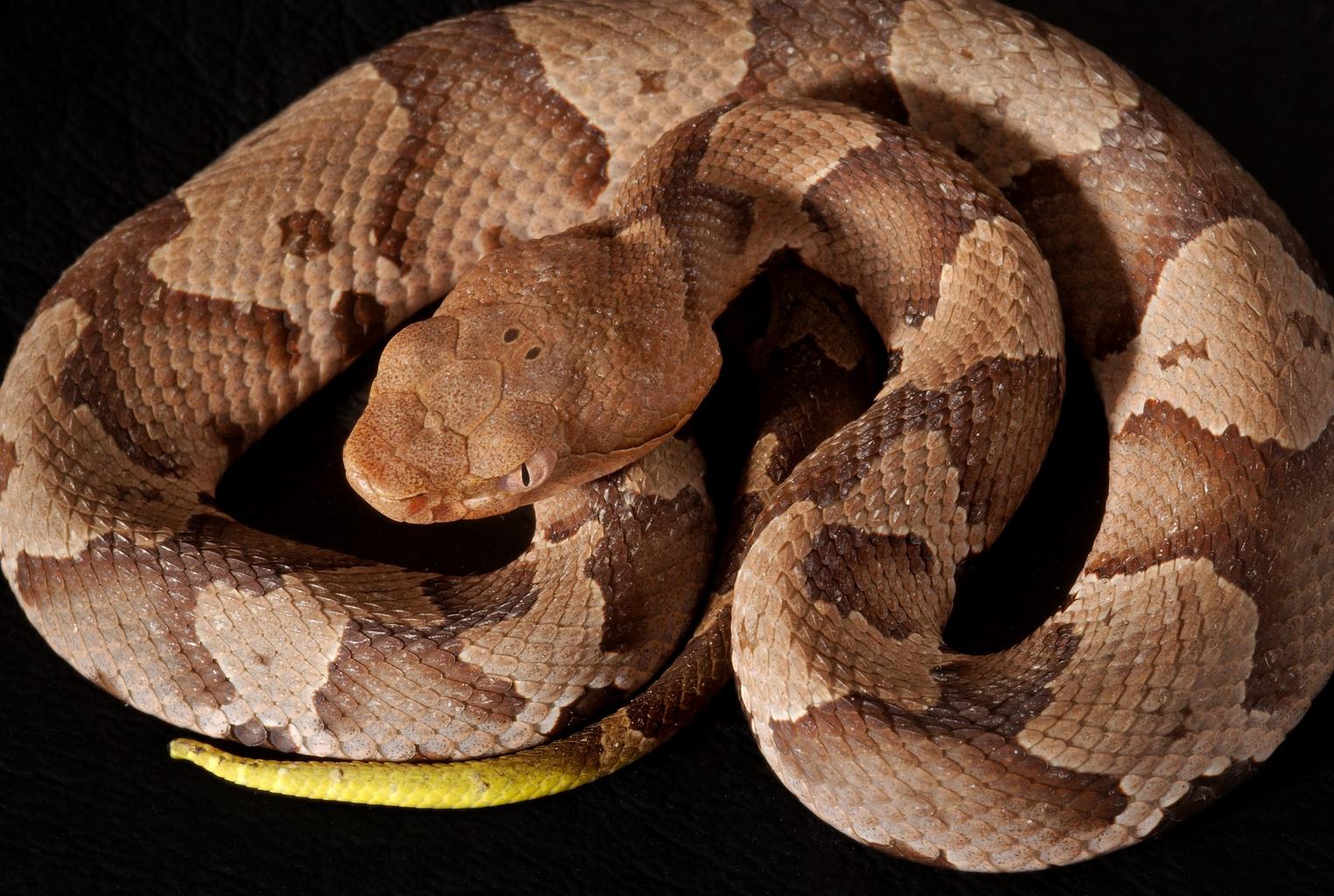 (image source: https://free-images.com/display/southern_copperhead_viper_poisonous.html)
(image source: https://free-images.com/display/southern_copperhead_viper_poisonous.html)
Copperheads are venomous pit vipers usually found in upper states like Alabama and Georgia, but have been found in some areas of the Panhandle. Their habitat is primarily forested woodlands, rocky outcroppings, and near swamps; often areas around where humans live. They camouflage extremely well and can be nearly impossible to differentiate from the dead leaves they hide within.
They are not aggressive and will only bite if physically threatened, but due to their tendency to freeze instead of slithering away, they are prone to being stepped on and attacking out of fear. Thankfully, they have relatively weak venom compared to other pit vipers, and they don’t often inject much venom into their bites in the first place. Regardless, help should still be sought after any sort of venomous snake bite.
They are a pale to pinkish-tan color with red-brown crossbands along the body, not to mention the distinctive copper-colored head. They are usually 20-37 inches in length and have stout, broad heads compared to their bodies.
Dusky Pygmy Rattlesnake
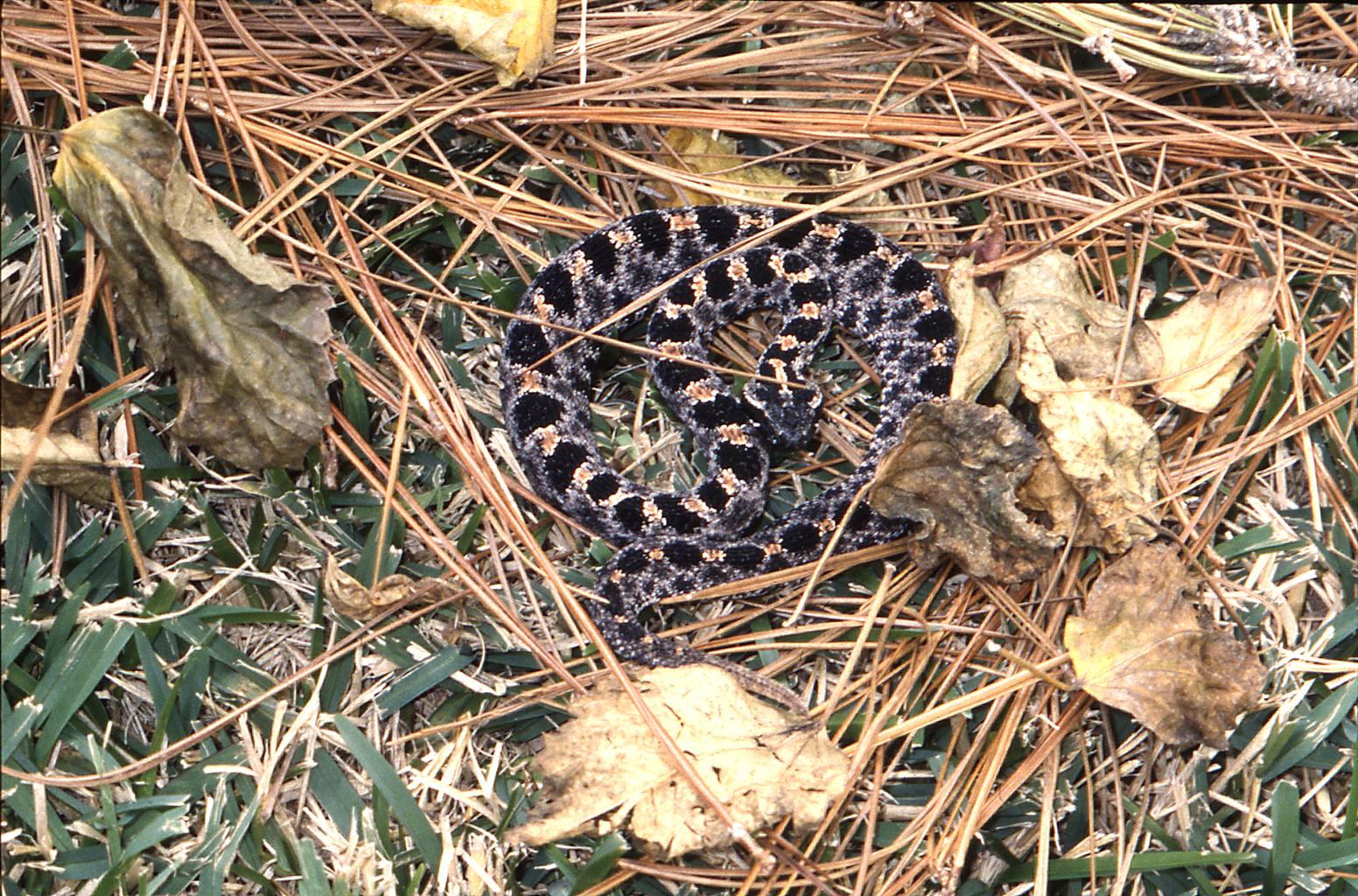 (img source: https://free-images.com/display/sistrurus_miliaris_barbouri_cdc.html)
(img source: https://free-images.com/display/sistrurus_miliaris_barbouri_cdc.html)
Pygmy Rattlesnakes are small, stout rattlesnakes found throughout Florida, including some of the barrier islands, but not the Florida keys. They are extremely abundant and can be found in many wooded areas, flat but primarily moist lowlands and other somewhat wet, covered areas usually nearby water.
They are generally not aggressive, though individuals may be, and typically don’t bite unless provoked or wounded. Despite being painful, their bites are relatively harmless, though help should be sought regardless if one is bitten. Due to their size, their defense rattle sounds very similar to the buzz of an insect rather than the distinct rattle of a larger rattlesnake.
They are usually 14-24 inches long and are stout and thick for their small size. They are gray and have dark, dusty spots along their backs and pale whitish underbellies. Their heads have stripes that reach from their eyes to the corner of their mouths and they have pits on the side of their heads.

